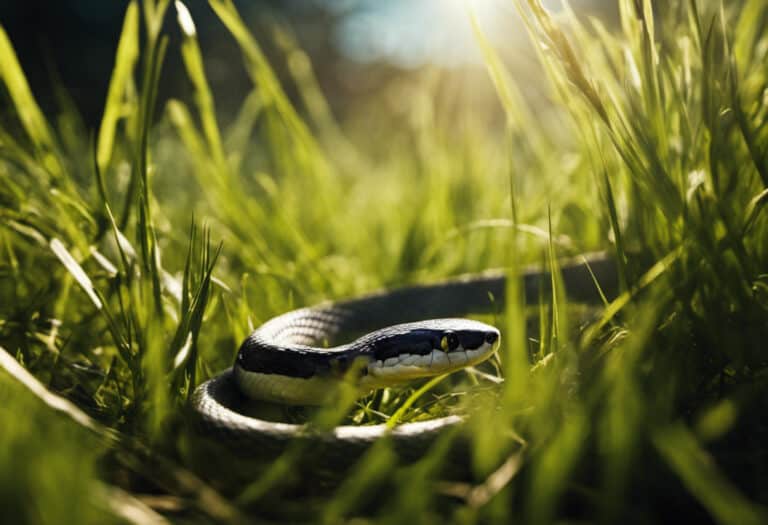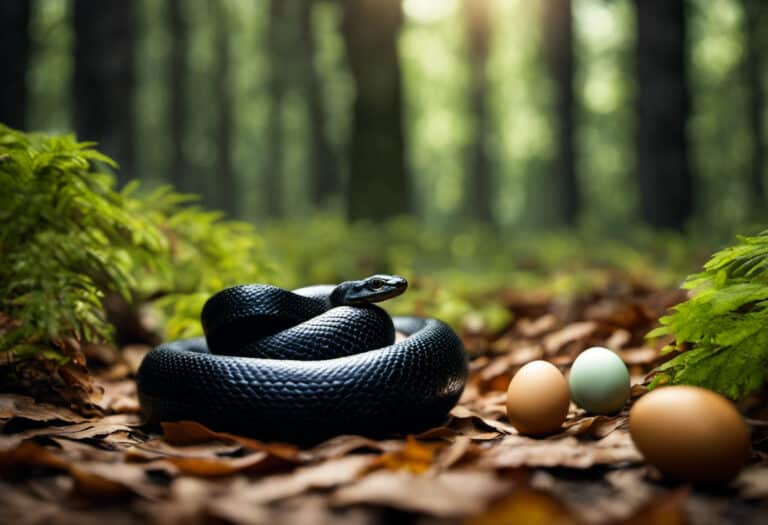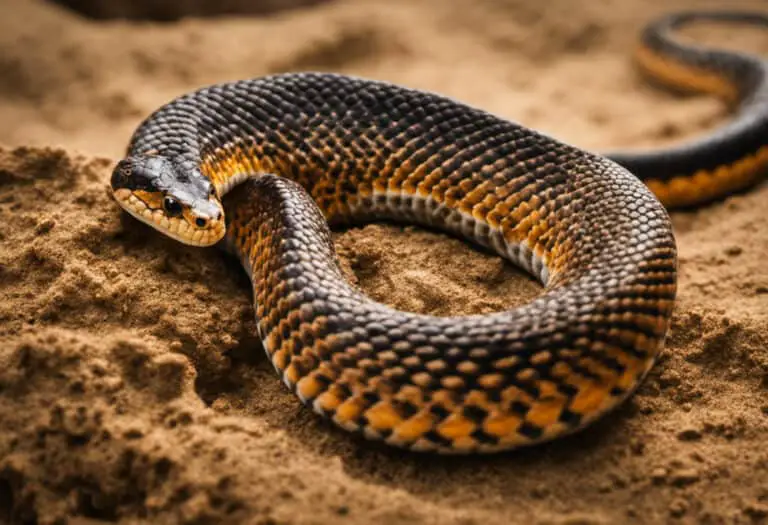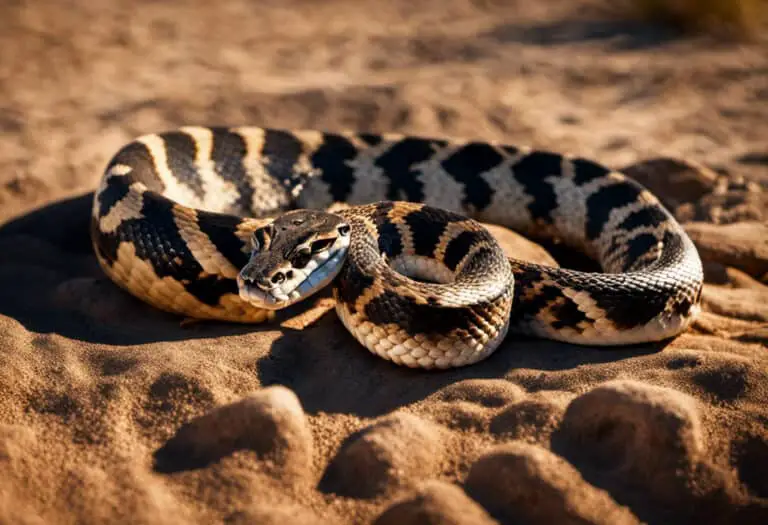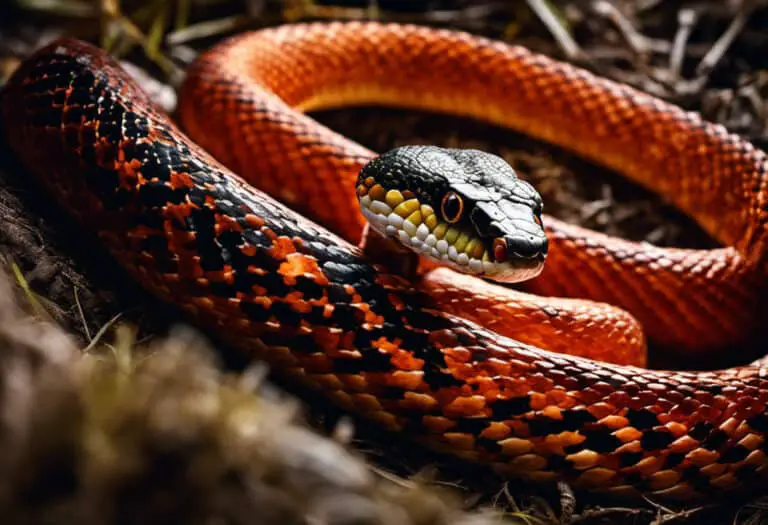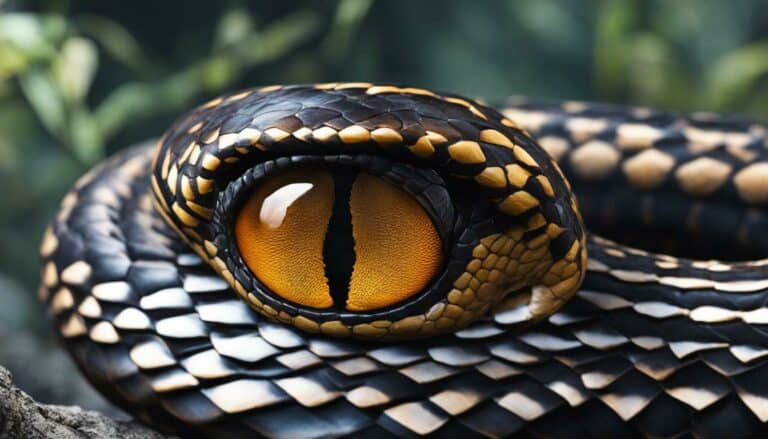Do King Snakes Climb Trees?
Ever wonder how king snakes effortlessly climb trees? In this article, we’ll explore the impressive climbing skills of king snakes and the adaptations that enable them to navigate various surfaces.
With their muscular bodies and strong grip, these snakes can scale trees, rocks, and even brick walls with ease. By using a unique technique called ‘concertina’, they grip with their scales and extend their bodies forward.
Join us as we delve into the world of king snakes and uncover the secrets behind their incredible climbing abilities.
Key Takeaways
- King snakes are known for their impressive climbing abilities, being able to scale various surfaces including trees, rocks, and brick walls.
- Climbing is a crucial behavior for king snakes in their natural habitats as it allows them to search for prey in elevated locations, access bird nests for eggs or nestlings, and escape flooding or extreme temperatures on the ground.
- King snakes have specialized scales called keeled scales that aid in climbing by providing additional grip. The scales on their belly are larger and help distribute their weight evenly while climbing.
- Other snake species, such as green tree pythons, vine snakes, rat snakes, and arboreal vipers, also possess impressive climbing abilities, which are adaptations to their specific habitats and lifestyles.
The Climbing Abilities of King Snakes
You may be surprised to learn that king snakes have impressive climbing abilities. Climbing is a crucial behavior for these snakes in their natural habitats, as it allows them to search for prey in elevated locations, expanding their food options.
Kingsnakes often climb to access bird nests and feed on eggs or nestlings. They may also climb to escape flooding or extreme temperatures on the ground. The ability to climb enhances their survival and reproductive success.
Kingsnakes possess specialized scales, known as keeled scales, that aid in climbing. These scales have small ridges that provide additional grip.
Comparing climbing abilities in different snake species, some tree-dwelling snakes, such as green tree pythons and vine snakes, are exceptional climbers. Certain species of rat snakes and arboreal vipers also have impressive climbing skills.
King Snakes and Their Vertical Skills
Impressively, king snakes can scale various surfaces, including trees, rocks, and even brick walls. Their climbing efficiency surpasses that of many other snake species, making them adept at navigating challenging terrains.
Climbing plays a vital role in the survival and reproductive success of kingsnakes. By climbing, they can search for prey in elevated locations, expanding their food options. Kingsnakes often climb to access bird nests and feed on eggs or nestlings. Additionally, climbing allows them to escape flooding or extreme temperatures on the ground, enhancing their chances of survival.
Their specialized scales, known as keeled scales, provide them with a strong grip, while their muscular bodies and flexible spines enable them to maneuver easily. The ability to climb sets kingsnakes apart and contributes to their freedom in their natural habitats.
Exploring the Tree Climbing Skills of King Snakes
When it comes to scaling vertical surfaces, kingsnakes are masters of the tree-climbing game. These non-arboreal snakes possess remarkable climbing abilities that rival those of other climbing reptiles.
To understand the extent of their prowess, let’s compare the climbing abilities of kingsnakes to other climbing reptiles.
| Reptile Species | Climbing Abilities |
|---|---|
| Kingsnakes | Impressive climbers, capable of scaling trees, rocks, and walls. They use a technique called ‘concertina’ to grip and extend their bodies forward. |
| Green Tree Pythons | Exceptional climbers, primarily found in trees. They coil their bodies around branches and use their prehensile tails for added stability. |
| Vine Snakes | Agile climbers, well-adapted to climbing and moving through vegetation. They have slender bodies and strong grip to navigate vines and branches. |
| Rat Snakes | Skilled climbers, often found in trees and shrubs. They use their powerful muscles and sharp claws to ascend vertical surfaces. |
| Arboreal Vipers | Adept climbers, equipped with a prehensile tail and specialized scales for gripping. They can navigate tree trunks and branches with ease. |
The Impressive Climbing Techniques of King Snakes
If you’ve ever witnessed a kingsnake in action, you can’t help but marvel at its ability to effortlessly scale vertical surfaces. These remarkable climbers possess unique adaptations that allow them to navigate challenging terrains.
Here’s a closer look at the impressive climbing techniques of king snakes:
-
Ecological Significance: Climbing is a crucial behavior for king snakes in their natural habitats. It enables them to search for prey in elevated locations, expanding their food options. They often climb to access bird nests and feed on eggs or nestlings. Additionally, climbing helps them escape flooding or extreme temperatures on the ground, enhancing their survival and reproductive success.
-
Comparing Climbing Abilities: While kingsnakes are known for their climbing prowess, they aren’t the only snake species with impressive skills. Some arboreal snakes, such as green tree pythons and vine snakes, also excel at climbing. Certain rat snake species and arboreal vipers, like the emerald tree boa, demonstrate remarkable climbing abilities as well.
King Snakes: Masters of Tree Climbing
You’ll be amazed at the way these reptiles effortlessly navigate their way up tall trees. King snakes, including the Sonoran Mountain Kingsnake, are masters of tree climbing. Their climbing abilities are unparalleled among snake species.
While some snake species can climb to a certain extent, king snakes excel at scaling even taller structures. In terms of climbing abilities, king snakes surpass many other snake species.
They possess specialized scales called keeled scales, which have small ridges that provide additional grip. These scales, coupled with their muscular bodies and flexible spines, allow them to navigate challenging terrains with ease.
King snakes also have a strong muscular grip, enabling them to hold onto surfaces securely.
| King Snakes | Other Snake Species |
|---|---|
| Impressive climbing abilities | Moderate climbing abilities |
| Specialized keeled scales for enhanced grip | General scales |
| Muscular bodies and flexible spines | Less muscular bodies and rigid spines |
| Strong muscular grip | Weaker grip |
King snakes have adapted to their natural habitats, where climbing plays a crucial role in their survival. They climb trees to search for prey, access bird nests, and escape flooding or extreme temperatures on the ground.
These climbing abilities enhance their survival and reproductive success. While other snake species, such as green tree pythons and certain rat snakes, also possess climbing abilities, king snakes stand out with their superior skills.
So, next time you see a king snake effortlessly climbing a tree, marvel at its agility and strength, knowing that it is truly a master of tree climbing.
Unveiling the Tree Climbing Abilities of King Snakes
You might be surprised by the effortless way these reptiles navigate tall trees, showcasing their unparalleled climbing abilities.
Here are 4 fascinating facts about king snake climbing techniques and the ecological significance of tree climbing for these remarkable creatures:
-
King snakes vs. Other Snake Species: King snakes aren’t the only snake species with impressive climbing skills. Tree-dwelling snakes like green tree pythons and vine snakes, as well as certain rat snakes and arboreal vipers, have adapted to climb trees and branches to suit their specific habitats and lifestyles.
-
Ecological Significance of Tree Climbing: Climbing is a crucial behavior for king snakes in their natural habitats. It allows them to search for prey in elevated locations, expanding their food options. Kingsnakes often climb to access bird nests and feed on eggs or nestlings. Additionally, they may climb to escape flooding or extreme temperatures on the ground. The ability to climb enhances their survival and reproductive success.
The Tree-Dwelling Capabilities of King Snakes
You might be amazed at how effortlessly king snakes navigate their way through tall trees, showcasing their remarkable tree-dwelling capabilities. These tree-dwelling predators have adapted to their arboreal lifestyle with a range of specialized adaptations.
Their muscular bodies and strong grip allow them to scale vertical surfaces, including trees, rocks, and even brick walls.
Kingsnakes use a unique climbing technique called ‘concertina,’ where they grip with their scales and extend their bodies forward. They possess specialized scales known as keeled scales that provide additional grip, especially on their belly, which helps distribute their weight evenly while climbing.
Their muscular bodies and flexible spines enable them to navigate challenging terrains with ease. These adaptations allow king snakes to search for prey in elevated locations, expanding their food options, and enhancing their survival and reproductive success.
King Snakes in the Treetops: Climbing Insights
As you delve into the world of king snakes, you’re about to discover their impressive climbing abilities. These snakes aren’t confined to the ground; they can navigate through treetops with ease.
Their muscular bodies, strong grip, and specialized scales enable them to conquer vertical surfaces, showcasing their remarkable adaptability in their natural habitats.
Climbing Adaptations in Kingsnakes
Kingsnakes’ specialized scales, known as keeled scales, provide them with additional grip while climbing. These scales have small ridges that enhance their ability to navigate vertical surfaces. The evolutionary advantages of climbing in kingsnakes are numerous. Here are four key points to consider:
-
Enhanced hunting capabilities: Climbing allows kingsnakes to search for prey in elevated locations, expanding their food options and increasing their chances of survival.
-
Access to nesting sites: Kingsnakes often climb to access bird nests and feed on eggs or nestlings, providing them with a valuable food source.
-
Escape from extreme conditions: Climbing enables kingsnakes to escape flooding or extreme temperatures on the ground, ensuring their survival in challenging environments.
-
Reproductive success: The ability to climb enhances their reproductive success by allowing them to access potential mates and secure nesting sites.
When comparing the climbing abilities of kingsnakes to other snake species, it’s clear that kingsnakes are exceptional climbers. While other snake species, such as tree-dwelling snakes and certain rat snakes, also possess impressive climbing skills, kingsnakes’ specialized scales and muscular bodies give them a competitive edge in navigating challenging terrains.
Climbing Vs. Other Behaviors
Now let’s explore the advantages of climbing for kingsnakes and compare them to other tree-dwelling snake species.
Climbing is a crucial behavior for kingsnakes in their natural habitats as it allows them to search for prey in elevated locations, expanding their food options. They often climb trees to access bird nests and feed on eggs or nestlings. Climbing also helps them escape flooding or extreme temperatures on the ground, enhancing their survival and reproductive success.
When comparing kingsnakes to other tree-dwelling snake species, such as green tree pythons and vine snakes, we can see that they all possess impressive climbing abilities. These adaptations are specific to their habitats and lifestyles. Additionally, certain species of rat snakes and arboreal vipers, like the emerald tree boa, are also adept climbers.
However, kingsnakes stand out with their unique keeled scales, muscular bodies, and strong grip, making them exceptional climbers in their own right.
Frequently Asked Questions
What Is the Average Lifespan of a King Snake?
The average lifespan of a king snake can vary depending on the species, but they typically live between 10 and 20 years in the wild. However, with proper care in captivity, they can live even longer.
Do King Snakes Have Any Predators in Their Natural Habitats?
Yes, king snakes have predators in their natural habitats. They must be cautious of animals like hawks, owls, raccoons, and other larger snakes. These predators play a vital role in maintaining the balance of their ecosystems.
Are King Snakes Capable of Swimming?
Yes, king snakes are capable of swimming and climbing trees. Their behavior allows them to explore different habitats and adapt to various environments. They have the ability to navigate both land and water with ease.
How Do King Snakes Capture and Consume Their Prey?
King snakes use a combination of hunting techniques to capture and consume their prey. They rely on their excellent sense of smell to track down potential meals, then strike and constrict their victims. Afterward, they swallow their prey whole, aided by their flexible jaws and specialized teeth.
Are There Any Specific Tree Species That King Snakes Prefer to Climb?
Yes, king snakes have impressive climbing skills and can climb trees. They use their muscular bodies and strong grip to navigate vertical surfaces. While they don’t have specific preferences for tree species, they can climb various types of trees.
Conclusion
As you conclude your exploration into the world of king snakes and their impressive climbing abilities, imagine these serpents effortlessly slithering up trees, their scales gripping and extending their bodies forward like a well-practiced concertina. These masters of tree climbing navigate elevated locations to search for prey, access bird nests for a hearty meal, and escape unfavorable conditions on the ground.
With their muscular bodies and strong grip, king snakes have truly perfected the art of scaling various surfaces, showcasing their remarkable adaptability in the animal kingdom.
